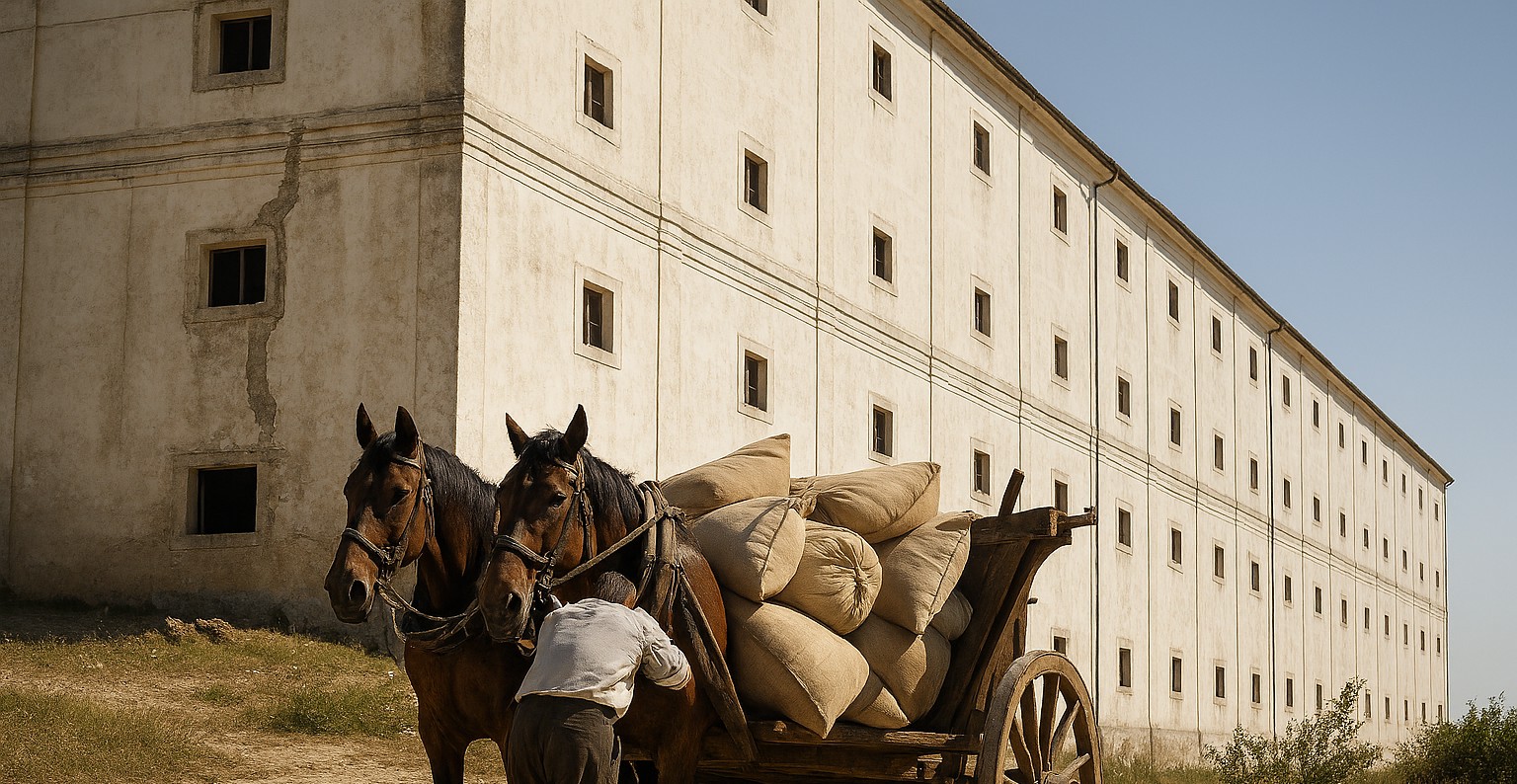
From History to Today
In the past, people had no guarantee that there would be enough grain each year, which led to the creation of "contribution granaries" — communal municipal storehouses that served as a safeguard in times of crop failure, war, or other crises.
Farmers could borrow grain from them for sowing, which they returned after the harvest, often with a small interest. In times of scarcity, grain from these reserves was distributed to the population, helping to prevent famines and social unrest. The granaries also helped stabilize grain prices in local markets and fostered solidarity among people – every farmer contributed to the communal stock. This system was not only practical but also farsighted, as it enabled communities to survive even in difficult times. Today, contribution granaries are often beautiful historical landmarks and a reminder of a smart and functional system through which people helped each other.
One of the most striking examples is the Bělohrad Granary – a Baroque building from the 18th century, notable for its unique architecture with vaulted ceilings on two floors. The vaulted ceiling on the ground floor is unusual for a granary originally intended solely for grain storage, while the vault on the second floor is entirely unique within the Czech Republic. In the 19th century, an entrance portal was added, and in 1893, an elevator was installed, leaving a breakthrough in the ground floor vault. In the 1980s, there were plans to convert it into a cultural center, but the project was never realized, which allowed the building to retain its nearly original form. A complete renovation in 2024 saved the granary and transformed it from a ruin into a vibrant cultural hub with a café, gallery, and multifunctional hall, which today forms the heart of social life in Lázně Bělohrad.
